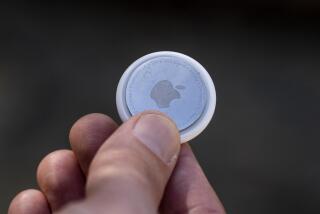Review: iPhone 5s is a great phone, but is it right for you? [Video]
The iPhone 5s is the most advanced iPhone yet, but it isn’t going to knock your socks off.
The 2013 version of Apple’s insanely popular smartphone has everything most consumers could want, but the improvements from last year’s model are slight and hardly noticeable to regular users.
Just like the iPhone 5, the new iPhone 5s features a sleek design, beautiful screen and is ultralight. The main differences are in three key areas: The iPhone 5s has an improved processor, a better camera and a new fingerprint scanner, called Touch ID.
PHOTOS: Top 11 hidden, cool features in Apple’s iOS 7
Those new features are all very nice, but if you already have an iPhone 5, there’s no reason to upgrade. And if you have an iPhone 4s, you might also want to just wait it out for the iPhone 6, or whatever Apple calls next year’s model.
But let’s talk about what’s new.
The most interesting feature is the Touch ID fingerprint sensor. Apple built the technology into the iPhone’s home button that’s located at the bottom of the device. That’s actually one of the few ways to distinguish an iPhone 5 from an iPhone 5s.
PHOTOS: Top 10 Apple iOS 7 features you should know about
Unlike the 5, the home button on the 5s has no icon in the middle and it also has a thin bezel around the circular button that is used to detect if the censor should start scanning a user’s fingerprint.
Touch ID is a useful feature for users who like keeping a security code on their device. Rather than having to input a four-digit number, users can simply scan their fingers -- or other body parts -- to unlock their phones. The feature can also be used to verify purchases, instead of typing in your Apple ID password.
Setting up the feature is a fairly quick process. Within the settings app, users can add fingerprints that can be used to unlock the phone. That means users can add a handful of their digits and then even some of their friends’ or family members’ prints too.
For the most part, the feature worked very well. On a few occasions, it had trouble scanning -- such as when I tried using a wet finger -- but in those scenarios, the device simply asks users to type in their code.
Users who carry their iPhones with security codes will enjoy Touch ID, but if you’re like me and don’t like having a security code on your gadget, you won’t find much use for the feature. If I hadn’t been testing the iPhone 5s, I would’ve likely simply turned Touch ID off and forgotten about it.
When it comes to the camera on the iPhone 5s, Apple has made improvements in both the hardware and software.
The camera is still only 8 megapixels, but those pixels are now larger, meaning the iPhone 5s takes better low-light images than before. Additionally, the camera has a larger sensor and a larger aperture. The iPhone 5s’ flash also uses two LED lights now in order to illuminate scenes more accurately.
All the tech improvements make for better and sharper pictures than before. Anyone who buys the phone will be happy with the pictures it takes, but the improvement over the iPhone 5 was not that noticeable to me and the camera on the iPhone 5s is still inferior to that of the Samsung Galaxy S4 and the Nokia Lumia 1020. The only way I could truly tell a difference between the pictures I took on the 5 and the 5s was by shooting the same picture with each phone and then putting them up against each other and comparing.
Users are likely to find more joy in the software improvements.
With the iPhone 5s, users can hold down the shutter on the camera and the device will rapidly take a burst of photos. How much faster can it take pictures than the iPhone 5? Well in the time it took the iPhone 5 to take seven photos, the iPhone 5s had taken 19. This feature should come in handy when taking action shots.
But my favorite part about the camera was the ability to shoot video in slow motion. The feature is hardly innovative, but it’s a blast to play with. You can shoot anything -- whether it’s as boring as a colleague drinking water or as fun as a dog running around a room -- and it will look much more interesting than at regular speed. Once more people pick up the iPhone 5s, don’t be surprised if you start seeing a large number of slow-motion videos on Instagram.
Meanwhile, the least noticeable feature exclusive to the iPhone 5s is its 64-bit A7 chip.
The A7 is the first of its kind for any smartphone, and what it essentially means is that it’s very fast. And sure enough, the iPhone 5s is quick to load websites and launch apps. But the speed isn’t all that noticeable. The only way you can tell is by putting the iPhone 5s next to the iPhone 5.
The difference should become more noticeable over time as more apps take advantage of the A7 chip, which is great news particularly for gamers, but for now, the average user won’t be able to tell the difference or appreciate the advanced technology.
And that’s why the iPhone 5s lacks star power. It has great technology, but most of the improvements are minor, under the hood, and don’t have much mass appeal. For anyone with an iPhone 5 or an iPhone 4s, it’s hard to be wowed by what Apple unveiled earlier this month. It takes a larger jump -- one from an iPhone 4 or iPhone 3GS -- to truly appreciate the 2013 iPhone model.
The iPhone 5s starts at $200 with 16-gigabytes of storage from most carriers with a two-year service contract. It comes in black, white and gold color options.
Overall, Apple’s iPhone 5s is a great device, but if you’re looking for a phone that will truly wow and impress your friends, look for an Android or wait to see what Apple unveils next year.
ALSO:
Martha Stewart takes on Apple, invokes Steve Jobs in Twitter rant
How to block ‘Breaking Bad’ spoilers and still use Facebook, Twitter
Steve Ballmer exits final Microsoft company meeting in classic style







